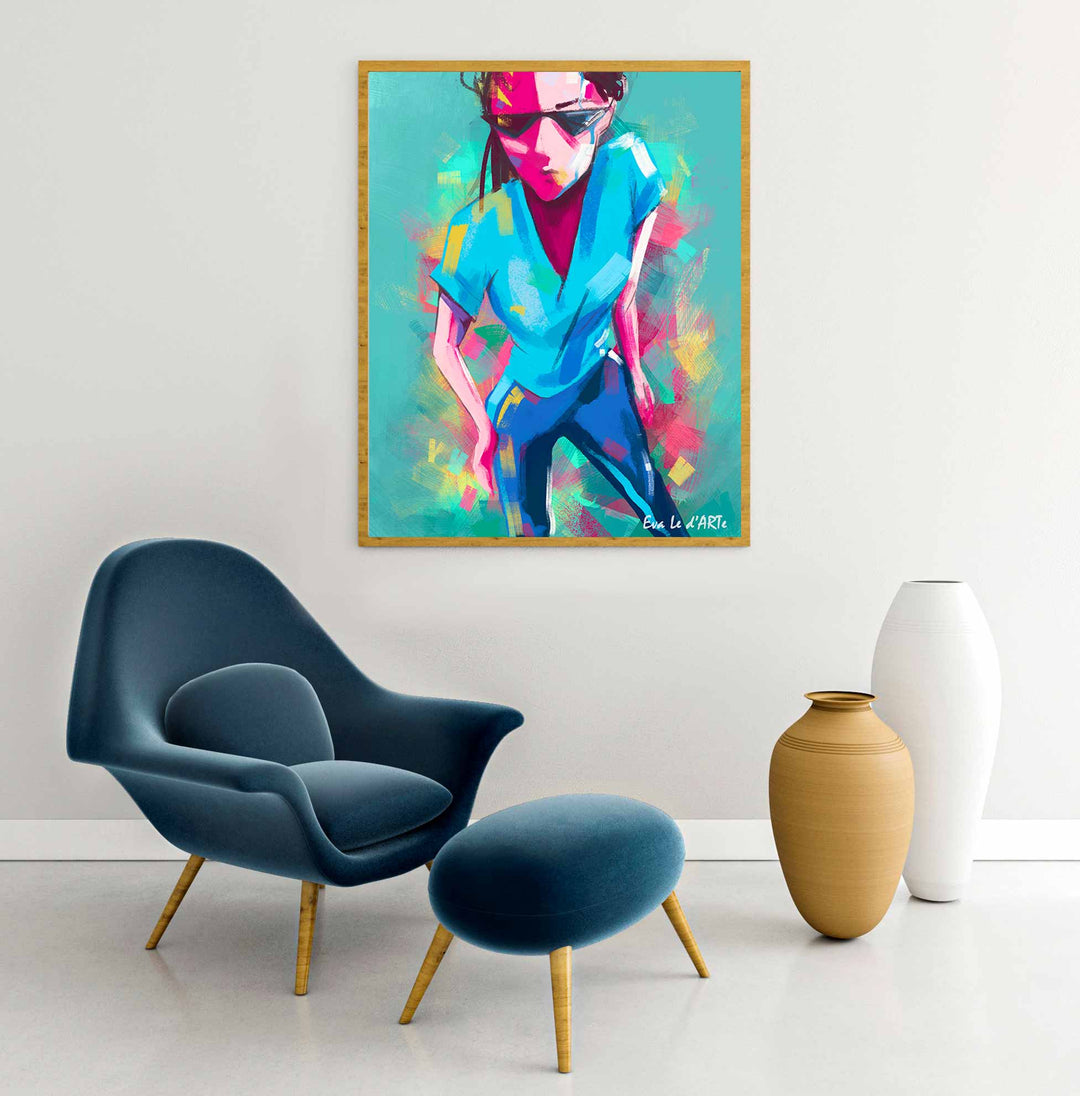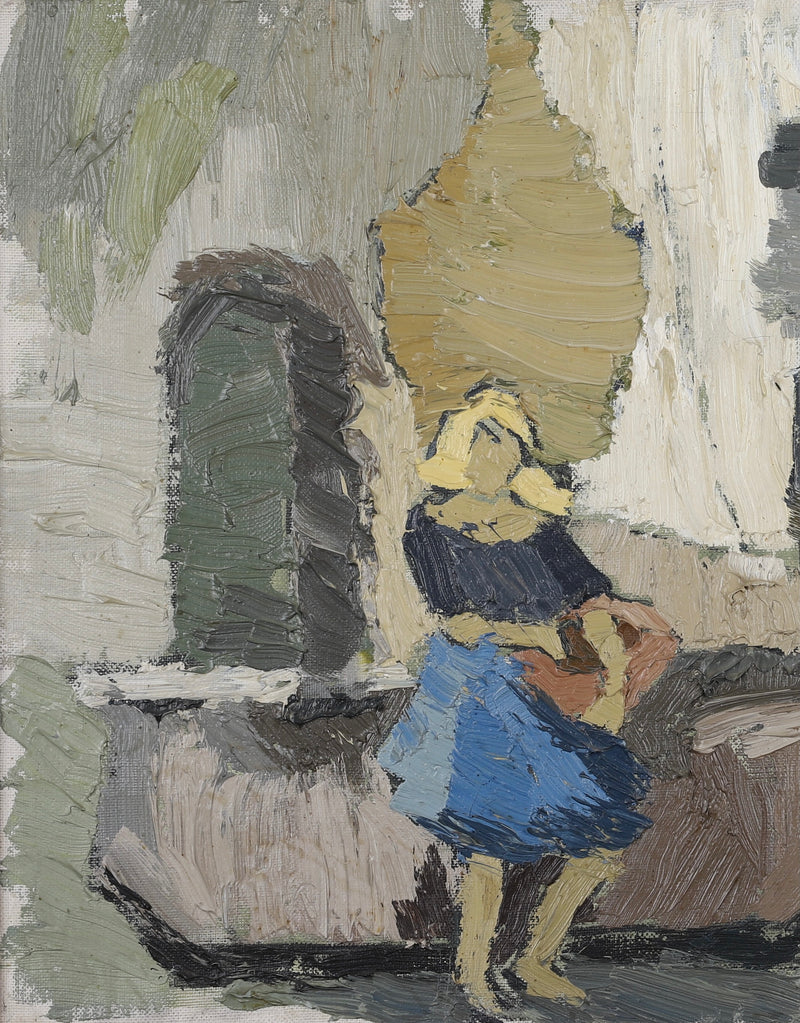Discover the very best Tips for Creating Stunning Figurative Oil Painting Artwork
Discover the very best Tips for Creating Stunning Figurative Oil Painting Artwork
Blog Article
The Duty of Emotion and Expression in Figurative Oil Painting: An In-Depth Analysis of Subject and Composition
The interplay of feeling and expression in figurative oil painting serves as an essential lens with which one can check out the detailed connection in between subject issue and composition. Artists harness numerous methods, from shade choice to brushstroke characteristics, to cultivate psychological vibration within their jobs.
Recognizing Emotion in Art
Feeling in art serves as a powerful avenue for expression, allowing musicians to convey complex sensations through their job. In figurative oil painting, this psychological deepness is often represented with the depiction of the human figure, catching the subtleties of human experience. The option of topic, color scheme, and brushwork all add to the psychological vibration of an item.
Artists regularly bring into play individual experiences, social problems, or global styles to evoke sensations in the visitor. For circumstances, a portrait might mirror susceptability, while a vibrant number in movement can symbolize freedom or chaos. These emotional threads connect the visitor to the art work, fostering a dialogue that transcends the aesthetic tool.
In addition, the interaction in between light and shadow can magnify psychological strength, assisting the visitor's gaze and accentuating specific elements within the composition. The usage of appearance in oil paint even more adds layers of intricacy, welcoming a tactile response that boosts the psychological experience. On the whole, recognizing emotion in art is vital for appreciating the nuances that define metaphorical oil painting, as it transforms simple depiction right into an extensive expedition of the human condition.
Crucial Element of Structure
In the world of figurative oil painting, the make-up functions as the underlying structure that arranges visual elements and boosts the psychological story. Important components of structure consist of balance, contrast, prime focus, and rhythm, each adding to the general effect of the artwork.
Balance refers to the distribution of visual weight within the paint, which can be accomplished through unbalanced or in proportion plans. A healthy make-up gives security, enabling the viewer to engage with the piece sympathetically - figurative oil painting. Comparison, on the various other hand, entails juxtaposing different aspects, such as light and dark or warm and awesome colors, to assist the audience's eye and evoke emotional feedbacks
The centerpiece is crucial, as it guides focus to one of the most considerable part of the painting, commonly highlighting the psychological core of the narrative. Via strategies like shade saturation or placement, musicians can emphasize this area effectively. Rhythm pertains to the rep of components, developing a feeling of motion and circulation throughout the composition. By masterfully integrating these crucial elements, musicians can craft mentally resonant and compelling metaphorical oil paints that astound and engage their target market.
Topic and Its Effect
Topic plays an essential function in figurative oil paint, as it not just functions as the structure for the narrative but also forms the visitor's interpretation and emotional involvement with the artwork. The choice of topic-- be it a singular figure, a team dynamic, or a thematic depiction-- directly affects the emotional ambience communicated to the audience.

For circumstances, portraits usually stimulate personal connections, disclosing the details of human expression and character, while scenes portraying common activities can produce a feeling visit the site of belonging or nostalgia. The historic and cultural context of the subject matter improves the customer's understanding, prompting deeper representations on social norms, values, and the human problem.
Various subject issues likewise create varying degrees of involvement; a dramatic dispute depicted through figures in tension might elicit sensations of link stress and anxiety or empathy, while tranquil landscapes can invoke tranquility and reflection. Eventually, the impact of subject matter in metaphorical oil paint is profound, as it acts as an avenue for emotional vibration, directing the visitor's response and analysis, and promoting a connection between the art work and the viewer. This interaction is vital for the successful communication of the artist's intent.
Strategies for Evoking Feelings
The effectiveness of figurative oil painting in communicating feelings is dramatically influenced by the methods employed by the musician. Among one of the most essential techniques is the use of shade concept, where the tactical option of shades can evoke certain psychological actions. Cozy colors, such as oranges and reds, often generate feelings of enthusiasm or aggression, while cooler tones like blues and environment-friendlies often tend to evoke peace or sadness.
One more vital method is the manipulation of light and darkness, called chiaroscuro. This approach improves the three-dimensionality of numbers, producing dramatic contrasts that can escalate psychological deepness. The positioning of light can guide customers' feelings, highlighting certain aspects of the composition.
Brushwork likewise plays an important role; loose, expressive strokes can convey energy and spontaneity, whereas smoother methods may suggest peace or precision. The plan of topics within the make-up can affect psychological effect. Close closeness can suggest affection, while distance might show isolation.
Ultimately, the combination of these methods makes it possible for musicians to craft stories that resonate with the customer, changing a plain visual experience right into an expressive emotional trip. - figurative oil painting

Instance Researches of Significant Works
Taking a look at significant jobs of metaphorical oil paint exposes just how different strategies are utilized to evoke hop over to here effective feelings. One exemplary situation is Edvard Munch's "The Scream," where the altered number and swirling background share existential dread. Munch's use of shade-- deep blues and dazzling oranges-- heightens the emotional effect, showcasing exactly how scheme options can form customer experience.
Another substantial work is Pablo Picasso's "Les Demoiselles d'Avignon." Below, bold brushstrokes and fragmented kinds show a troubled psychological landscape, testing standard depictions of the women number. Picasso's innovative structure not just records the customer's focus yet likewise welcomes reflection on themes of identity and sexuality.
Additionally, Frida Kahlo's "The 2 Fridas" uses a poignant expedition of duality and self-identity. The different figures, linked by a shared heart, exhibit Kahlo's emotional deepness and personal story. figurative oil painting. Her careful focus to detail and symbolic elements serve to involve viewers on a visceral degree
These study emphasize the extensive link in between feeling and composition in metaphorical oil paint, disclosing exactly how artists harness technique to connect complicated feelings and narratives that reverberate across time and culture.

Conclusion
To conclude, the interplay of emotion and expression in figurative oil paint dramatically boosts the customer's experience and analysis of the art work. Via a mindful choice of subject issue and compositional methods, musicians communicate profound stories that resonate on both personal and global degrees. The application of color theory, chiaroscuro, and brushwork additional enhances emotional deepness, transforming each canvas into a powerful representation of the complexities of the human experience.
In figurative oil painting, this psychological depth is commonly represented via the representation of the human number, recording the subtleties of human experience.Additionally, the interplay between light and shadow can amplify psychological strength, leading the visitor's stare and drawing interest to certain aspects within the structure. The use of texture in oil painting additionally includes layers of intricacy, welcoming a tactile reaction that boosts the emotional experience.The focal factor is critical, as it directs attention to the most significant component of the paint, often highlighting the emotional core of the narrative. Inevitably, the influence of subject matter in metaphorical oil painting is extensive, as it serves as an avenue for emotional resonance, leading the visitor's feedback and interpretation, and fostering a link in between the artwork and the viewer.
Report this page